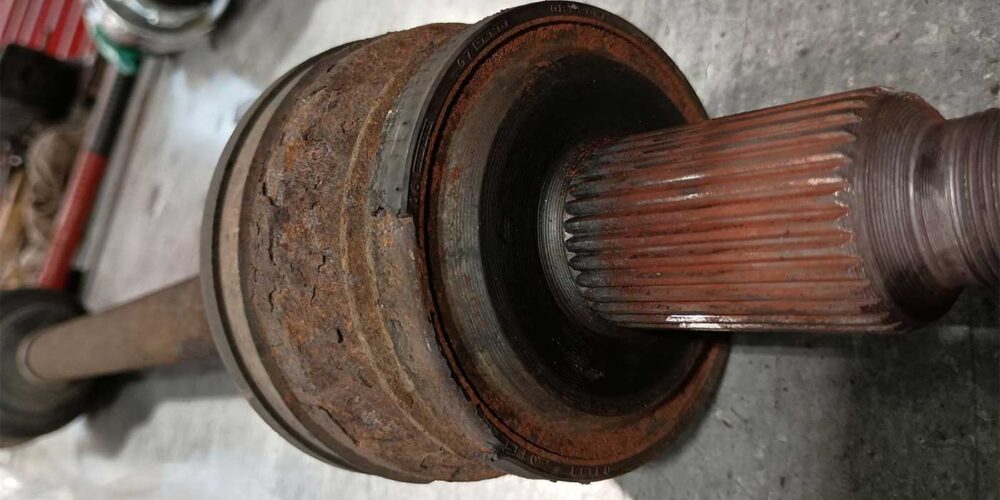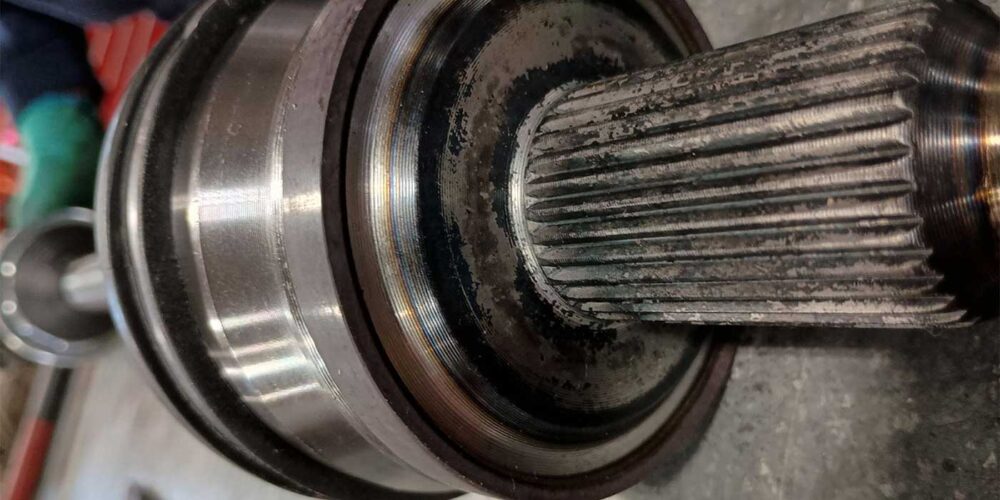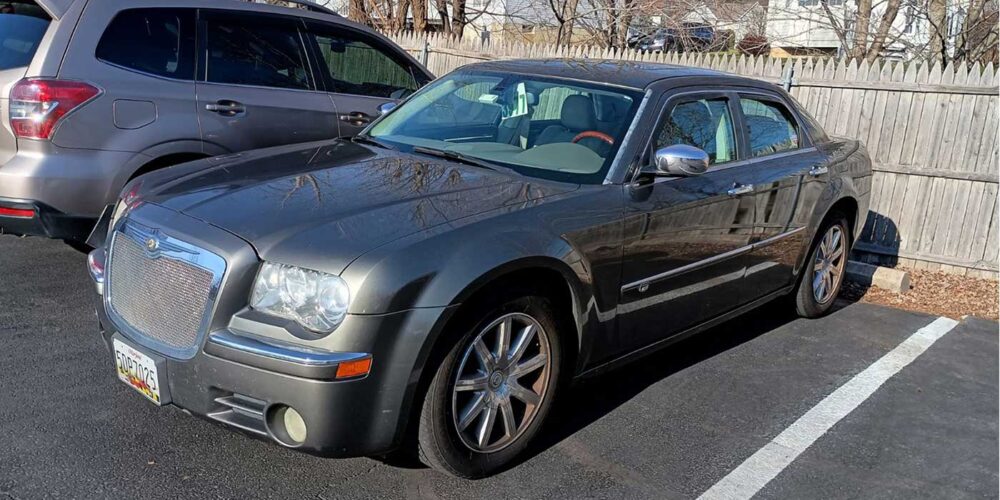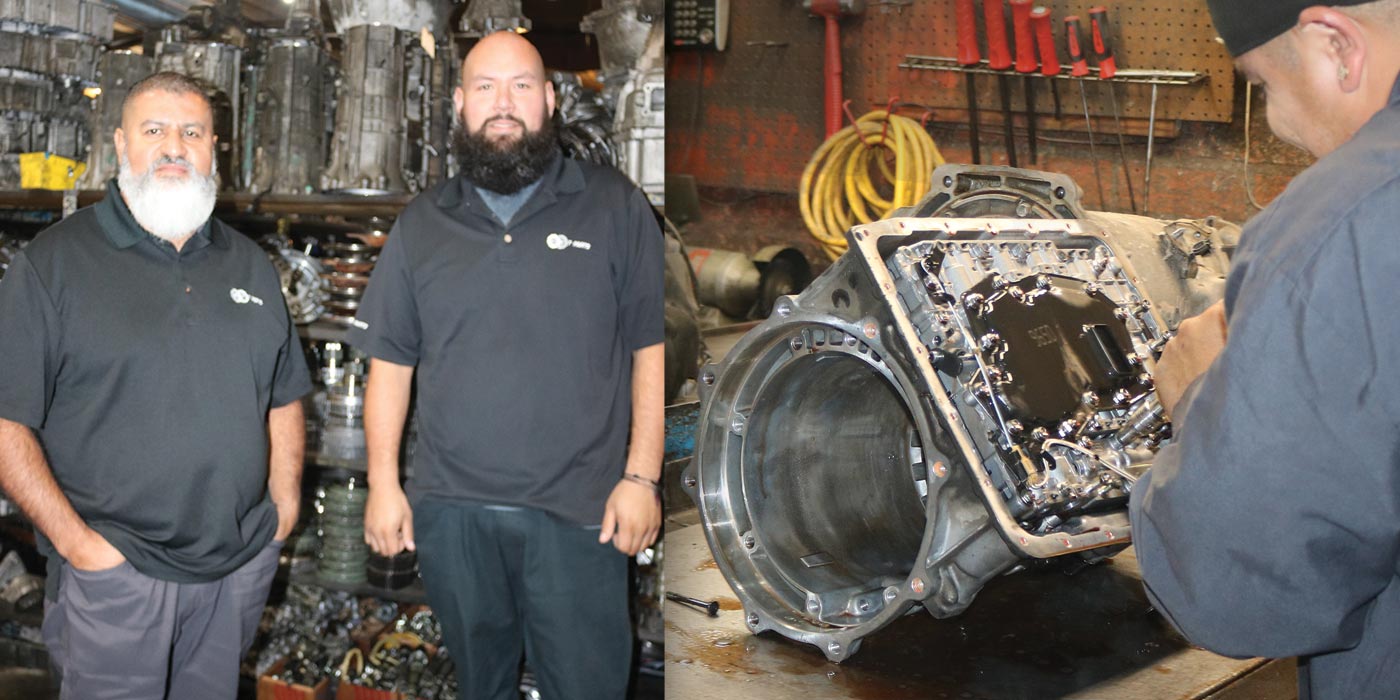The case study has to do with a 2009 Chrysler 300 C 5.7L Nag1 RWD with 71,923 miles on it (see Figure 1, above).
It is based on a second opinion where a customer’s instinct combined with family member’s urging to seek a second opinion saved this customer a significant amount of money.
First, a little history with this car is in order. The first time this car arrived at our shop was in 2020 with 42,849 miles for a P2767 code indicating input sped sensor 2 circuit no signal. This code was intermittent and would allow for a complete test drive to verify satisfactory transmission operation before code was set. Through proper diagnostic procedure, we determined that the conductor plate would need replacement. After repair, the vehicle was road tested and confirmed that the code issue was corrected, and the transmission performed flawlessly.
Fast forward to December 2023. This same car, with the same vehicle owner, now with 71,923 miles (almost exactly 29,000 miles since the last visit to our shop) walks through our door after getting a diagnosis and a quote from a competing national chain transmission specialty shop. This customer is visibly shaken from having the experience of her “baby” letting her down. They received a quote that only left the option of complete rebuild or replacement both transmission and converter. The customer concern was that the ABS, traction control and check engine lights were on with a drivability concern of slipping and going into “failsafe.” With a family member recommending a second opinion, they secured an appointment with our shop to start a fresh diagnostic. The results of this transmission diagnostics were as follows:
Codes:
- U1418 implausible right rear wheel distance signal received
- U140C implausible right rear wheel speed signal received
- U140B implausible left rear wheel speed signal received
- P0501 vehicle speed sensor 1 performance (the last 3 codes were stored in the TCM, the first was stored in the ECM)
These next 2 codes are only to establish that the codes were also part of the ABS/ traction control system:
- C102B right rear wheel speed sensor circuit
- C1043 left rear wheel tone wheel performance.
Understanding how a Nag1 functions, it receives over the CAN BUS vehicle speed from the ABS module as the transmission is not equipped with an output speed sensor. You can now understand how important it is for the TCM to receive this vehicle speed signal from the ABS module to with which to properly command all shifts, both up and down.
Now on to our diagnosis of the problem. A test drive is in order as codes have been recorded and correct transmission fluid level and good condition have been noted. A short drive of the vehicle resulted in an immediate shift to failsafe and no further shifting afterward. During this test drive, we decided to use the scan tool’s graphing function to “watch” both rear wheel speed signals. At this time the right rear wheel speed was zero and the left rear wheel speed was erratic. Both of these agree with the wheel speed codes that were recorded from the ABS module.
First, let’s look at the ABS module for the troubling code of C102B right rear wheel speed sensor circuit.
In the case of this vehicle, we discovered that the 12-volt supply to the wheel speed sensor was being pulled to ground, causing code C102B to set. This explains the no-signal condition coming from this sensor. Once a new wheel speed sensor was installed, the signal was restored, and the vehicle shifted properly. Codes C102B and P0501 are no longer set due to this repair.
Unfortunately, code C1044 set in addition to the C1043, indicating that the left rear wheel speed sensor still had issues. Once again using the graphing function of the scan tool, we verified the right rear signal was good but saw an erratic left wheel speed signal.
A closer look at the rear driving axles, a damaged tone wheel can be seen in Figure 2 which can be compared to a new replacement in Figure 3.


Since this vehicle has an independent rear suspension, the rear axles look a lot like the driving axles common to most front wheel drive vehicles. They have their tone wheel located on the outboard joint close to the spline that engages with the wheel hub. This damage to the tone wheel due to corrosion (we are in the northeastern U.S. with road salt common in the winter) is enough to create an erratic wheel speed signal. Knowing this, an axle replacement was in order. With replaced axles, all codes were cleared and did not return. All drivability was restored back to the vehicle making the customer very pleased with not having to replace a transmission and torque converter in their baby at a considerably higher price.
We now know that antilock brake system faults can create a condition that will force a transmission into failsafe, and that proper diagnosis can save both time and money while earning a customer for life.














